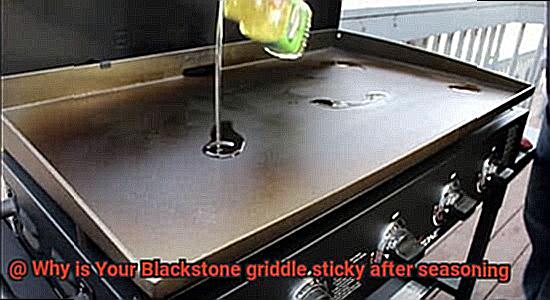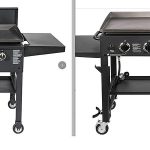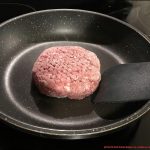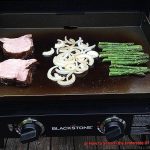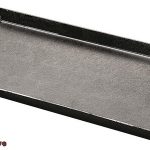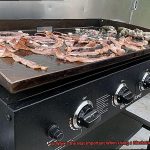Do you have a sticky Blackstone griddle after seasoning? Many Blackstone grill owners face this issue, leaving them wondering why.
The answer? Improper seasoning is often the culprit.
To prevent your Blackstone griddle from becoming greasy, it’s important to use the right oil, spread it evenly and cook at the correct temperature. Excess oil buildup can also cause stickiness.
If you’ve been using too much oil or not scrubbing the surface properly after cooking, there may be an oily residue that results in a sticky surface. High heat cooking temperatures can also lead to stickiness on your Blackstone griddle.
Now that we know what could be causing your sticky Blackstone griddle, let’s look at how to avoid it happening again.
Contents
What is Seasoning?
In short, seasoning is the process of adding a layer of oil to your griddle and then heating it to a high temperature until the oil polymerizes and bonds with the griddle’s surface.
This creates a non-stick coating that also protects against rust and other forms of corrosion. Plus, the oils and fats from previous cooking sessions are burnt off, infusing flavor into your dish while the surface retains its layer of flavor.
To season your Blackstone griddle, you’ll need to clean it thoroughly before applying a thin layer of oil like vegetable or flaxseed oil. Then heat it to 350-400 degrees Fahrenheit for at least an hour.
Remember that seasoning isn’t a one-time process – you should repeat it regularly to maintain the non-stick surface and protect against rust and other forms of damage.
Why is Your Blackstone Griddle Sticky After Seasoning?
If you’ve seasoned your Blackstone griddle and find yourself with a sticky surface, don’t worry – it’s not a lost cause.
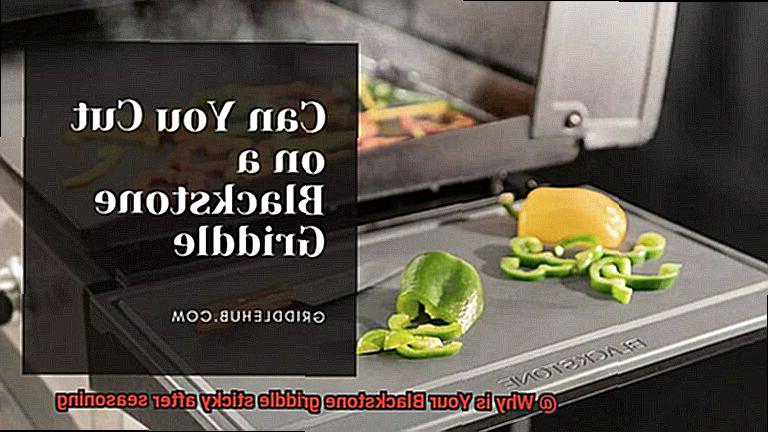
There are several potential causes of this sticky residue, and with the right steps, you can prevent it from happening. Firstly, make sure to choose the right type of oil for seasoning.
Vegetable oil can leave behind a sticky residue due to its high sugar content, so opt for oils with a higher smoke point like flaxseed or canola oil instead. Additionally, don’t overdo it – apply a thin layer of oil evenly across the entire surface to prevent pooling and creating a tacky layer.
Temperature is another key factor – if the griddle isn’t hot enough during the seasoning process, the oil won’t properly polymerize and bond to the surface. Make sure to heat your griddle to at least 300 degrees F and hold it at around 15-20 minutes before starting the seasoning process.
And finally, leftover food particles left on the griddle can also make it sticky – so heat it after cooking and scrape away any leftover food with a scraper and brush before seasoning your grill.
The Wrong Type of Oil
When it comes to seasoning your Blackstone griddle, you need to choose the right oil like a boss.
Unfortunately, many people make the mistake of using the wrong type of oil – which can leave their griddle feeling sticky and unpleasant. The best oil for seasoning your Blackstone griddle is flaxseed oil.
This special oil is known for its ability to form a hard, non-stick surface on your griddle when applied correctly. Plus, it’s high in omega-3 fatty acids, making it a healthier option than other oils.
Avoid using vegetables, canola or olive oil for seasoning at all costs. These oils have a low smoke point and will not produce a durable non-stick surface on your griddle.
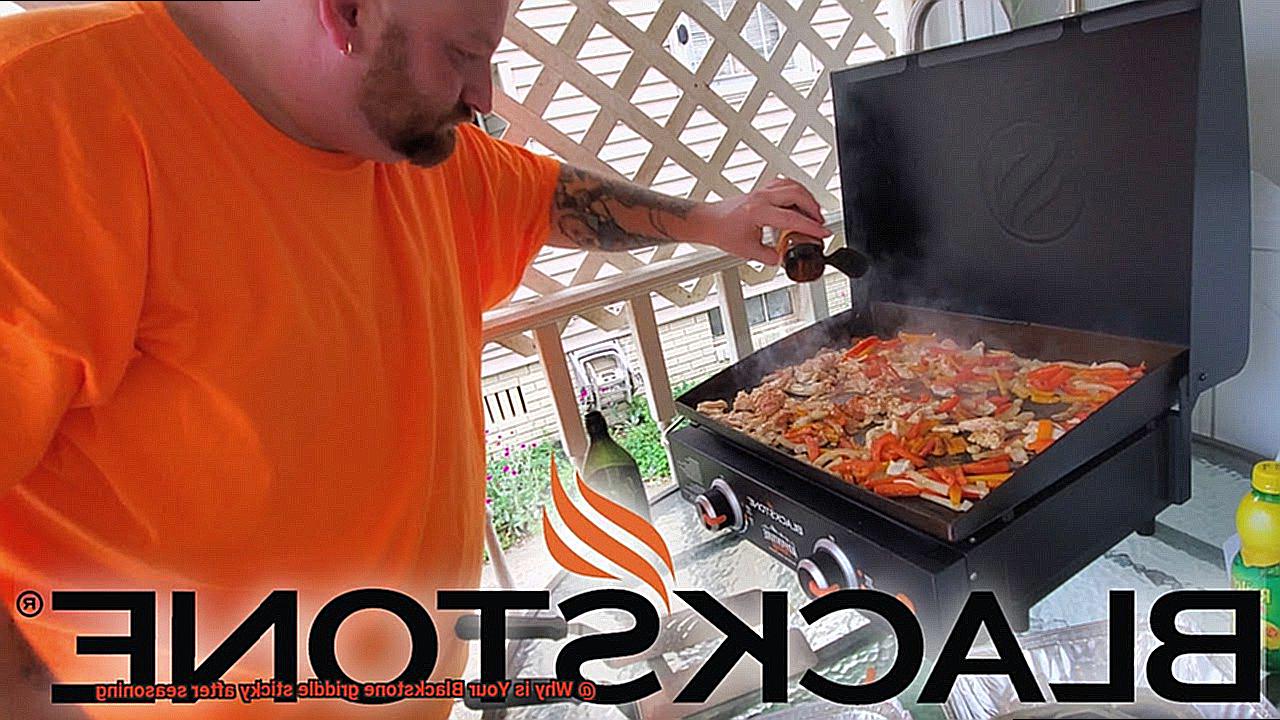
What’s more, they can burn and leave behind a gummy residue. And lastly, don’t forget to skip the cooking sprays.
To get the best results, use high-heat oils like flaxseed oil instead of shortcuts with cooking sprays.
Applying Too Much Oil
Seasoning your Blackstone griddle doesn’t have to be a sticky situation.
Many griddle owners have encountered the same problem – a gummy, unpleasant surface due to applying too much oil during the seasoning process. While oil is essential for protecting against rust and creating a non-stick surface, it’s important to use the right amount of oil – too much will result in an unpleasant residue that makes cooking and cleaning difficult.
Start by selecting the right kind of oil. For seasoning, your Blackstone griddle, opt for oils with high smoke points, such as flaxseed or canola oil.
Then, apply a thin layer evenly across the surface using a paper towel or cloth. Too much oil will create a sticky residue and form a thick layer that won’t be absorbed into the griddle.
Next, heat your griddle over high heat for ten minutes after applying the oil. This helps it penetrate and bond with the griddle’s surface, resulting in a non-stick coating that will make cooking faster and cleaner.
By using just enough oil and following these simple steps, you can ensure that your Blackstone griddle performs optimally each time you cook.
Low Temperature During the Seasoning Process
It could be due to the temperature you used during the seasoning process.
To achieve optimal results, your griddle should be heated to 400 degrees Fahrenheit for 10 minutes before applying oil or another seasoning powder. Using the right kind of oil is also key – vegetable oils with high smoke points, such as flaxseed or canola oil, are best.
Additionally, make sure the griddle is clean and dry before seasoning; any remaining food particles on the griddle will cause stickiness.
Residual Food Particles
If your Blackstone griddle is still sticky after seasoning, residual food particles may be the culprit.
Even if you use plenty of oil during the seasoning process, any food particles left on the surface can get baked into the seasoning layer and create an uneven, sticky surface. To avoid this, it’s essential to clean your griddle thoroughly before and after each use.
A scraper, spatula, or a special griddle-cleaning brush are all great tools for removing food debris from the surface. Additionally, hot water, soap, or a soft sponge can be used to wipe down the griddle and remove any remaining particles.
fyKWTKKSQoM” >
How to Avoid a Sticky Griddle
Cooking on a griddle can be an enjoyable experience, but it’s important to properly prepare and maintain it to prevent stickiness. Here are five steps you can take to avoid a sticky griddle on your Blackstone Griddle:
Seasoning the Griddle
To ensure non-stick cooking, it’s essential to season your griddle before every use. This involves heating the griddle to a high temperature and then coating it with a thin layer of high smoke points oil, such as vegetable or canola oil. This will create a non-stick layer on the surface of the griddle, making cooking and cleaning much easier.
Selecting the Right Oil
When seasoning your griddle, make sure to choose an oil with a high smoke point such as vegetable, grapeseed, or avocado oil. Avoid using butter or olive oil because they have lower smoke points and can leave behind a sticky residue on the griddle surface.
Cleaning After Use
After each use, scrape away any excess food particles with a scraper or spatula before wiping down the surface with a damp cloth or paper towel. Avoid using soap or other harsh cleaning agents as this will strip away the non-stick layer and cause the griddle to become sticky again in no time.
Storing Your Griddle
To prevent rust and other damage from occurring over time, make sure to store your Blackstone griddle in a dry place and cover it with a cloth or other protective material when not in use. This will keep it clean and free of dust and debris buildup.
Removing Buildup
If you do experience stickiness despite taking these preventive measures there are still some steps you can take. To remove any buildup from your griddle’s surface try using a degreaser or specifically designed cleaner for Blackstone griddles.
You can also try heating the griddle again before scraping off any excess buildup with a scraper or spatula, but be careful not to burn yourself.
Also Read: How To Season A Blackstone Griddle Press? – Pastime Bar And Grill
Conclusion
In conclusion, maintaining a non-stick surface on your Blackstone griddle is crucial for hassle-free cooking and cleaning.
By following the steps outlined in this blog post, you can avoid a sticky griddle and ensure optimal performance every time. Proper seasoning with the right oil, thorough cleaning after each use, and storing your griddle in a dry place are all essential steps to prevent stickiness.
Additionally, removing any buildup with a degreaser or scraper can help restore the non-stick surface. It’s important to note that using too much oil during seasoning or selecting an oil with a low smoke point can also cause stickiness.
Therefore, it’s crucial to choose the right oil and apply it evenly across the entire surface. With these tips in mind, you can enjoy cooking on your Blackstone griddle without worrying about stickiness or residue buildup.

